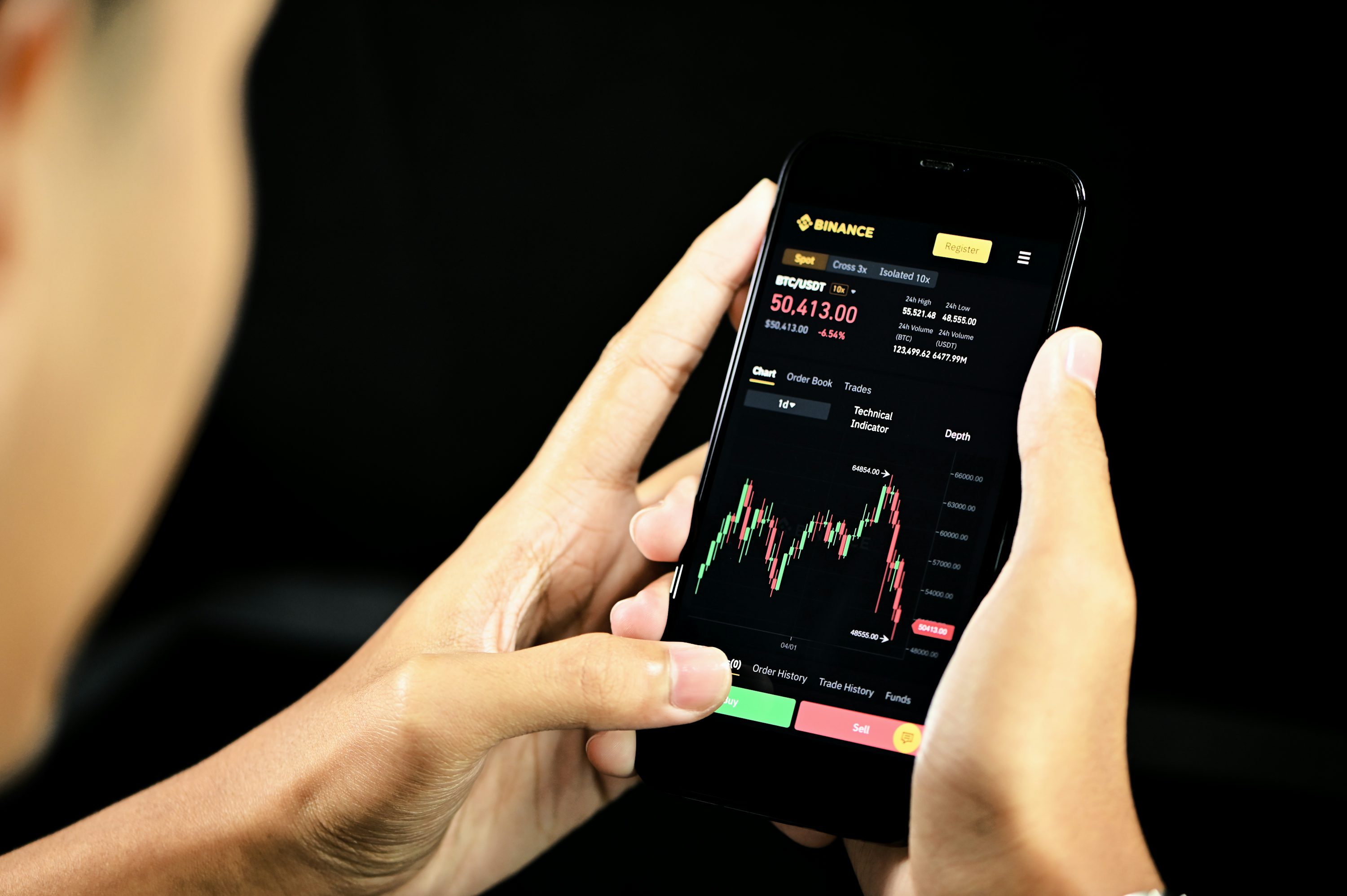Ever watched a stock swing wildly inside an hour and wondered whether options or straight day trading suits you better? Day Trading Tips often emphasize speed, momentum, tight stop loss rules, and capital allocation. At the same time, options trading adds leverage, limited downside when you buy calls or puts, and factors like strike price, expiration, premium, and implied volatility. In this guide, you will learn the key differences, benefits, and risks of options trading and day trading so you can pick the strategy that best fits your financial goals.
To help you put those ideas into practice, Goat Funded Trader's prop firm offers funded accounts and clear trading rules so you can test options and intraday setups with professional risk limits, build discipline, and find what fits your style.
What Is Options Trading?

Options trading involves buying and selling contracts known as options, which give you the right, but not the obligation, to buy or sell an underlying asset at a predetermined price, called the strike price, before a specified expiration date. These contracts can be based on assets like stocks, commodities, or currencies.
How Does Options Trading Work?
In options trading, there are two main types of options: call options and put options. A call option gives you the right to purchase an asset at a set price within a specific timeframe, while a put option gives you the right to sell an asset under similar terms. To acquire this right, you pay a premium upfront.
You can either exercise the option to buy or sell the asset, or you can sell the option contract itself before expiration. Buyers (holders) of options are not obligated to exercise, limiting their loss to the premium paid. Sellers (writers) may have a higher risk due to the obligation to fulfill the contract if exercised.
Exercising Options
Exercising an option means choosing to buy or sell the underlying asset at the strike price before expiration. While many traders close their positions by selling the option contract itself, exercising requires understanding contract terms and current market conditions since it involves actual asset transactions.
Benefits of Options Trading
Options trading offers several advantages over traditional stock buying or day trading:
Flexibility in Strategies
Options allow traders to implement a wide range of strategies, from simple buying or selling of calls and puts to complex multi-leg spreads, to profit in different market conditions.
Hedging
Investors use options to protect their portfolios against adverse price movements. For example, purchasing put options can serve as insurance against stock price declines.
Defined Risk
When buying options, the maximum loss is limited to the premium paid, allowing traders to know their worst-case financial exposure upfront.
Diverse Opportunities
Options are available on various asset classes, extending your ability to invest or speculate beyond just stocks to include commodities and forex.
Income Generation
Strategies like covered calls enable investors to earn additional income by selling options against stocks they own.
Risks Involved in Options Trading
Options trading carries significant risks, some of which include:
Potential for Total Loss
If the market doesn’t move favorably, an option can expire worthless, resulting in the complete loss of the premium paid.
Complexity
The array of strategies and terminology creates a steep learning curve. Successful trading requires a sound understanding of market dynamics and option mechanics.
Obligation for Sellers
While buyers have limited risk, sellers of options can face substantial, even unlimited, losses if the market moves against them.
What Is Day Trading?

Day trading is the practice of buying and selling financial instruments such as stocks, forex, or commodities within the same trading day, aiming to profit from short-term price fluctuations. The key objective is to capitalize on quick market movements and close all positions before the market closes to avoid overnight risk.
How Does Day Trading Work?
Day traders rely heavily on technical analysis and real-time charting tools to spot potential trade opportunities. They enter and exit trades within the trading day, seeking to make multiple small profits. This requires fast decision-making and constant market monitoring. Unlike longer-term investing, day trading focuses on quick gains from minor price changes.
Day trading thus requires a disciplined approach, solid market knowledge, and effective risk management to navigate these challenges successfully.
Benefits of Day Trading
Quick Profit Opportunities
The short duration of trades allows for multiple transactions in a day, potentially accumulating fast gains.
Flexibility in Market Direction
Day traders can profit from both upward and downward market movements, as long-term trends do not bind them.
No Overnight Risk
Closing all positions by day’s end eliminates exposure to risks arising from overnight events or market gaps.
Direct Control and Real-Time Decisions
Traders actively control their trades, making immediate adjustments as market conditions change.
Potential for Diversification
Multiple asset classes (stocks, forex, commodities) can be traded throughout the day, enabling risk spreading.
Risks Associated with Day Trading
High Volatility Exposure
The fast pace and volatile nature can lead to sharp losses if not managed carefully.
Potential for Rapid Financial Loss
Quick market swings can erode capital rapidly without well-planned strategies.
Emotional and Mental Stress
The demand for continuous attention and instant decisions can be taxing emotionally.
Related Reading
- Can You Make Money Day Trading
- How Old Do You Have to Be to Day Trade
- Day Trading Success Stories
- Day Trading Crypto vs Stocks
- Day Trading Psychology
- Day Trading as a Side Hustle
- Day Trading Taxes
- Why is Day Trading Restricted
Options Trading vs. Day Trading

Options trading and day trading differ fundamentally in the financial instruments involved, time horizons, and risk profiles, making each suitable for different trader preferences and styles.
Trading Instruments
Day trading involves buying and selling financial instruments, such as stocks, futures, or currencies, within the same trading day to capitalize on short-term market movements.
Options trading, on the other hand, deals with contracts that grant the right, but not the obligation, to buy or sell an underlying asset at a predetermined price before a specified expiration date. This distinction means options trading can leverage more complex strategies beyond outright ownership of assets.
Time Frames and Investment Duration
Day trading is characterized by very short-term holding periods, typically closing all positions before the market closes on the same day to avoid overnight risks.
Options contracts can span much longer durations, ranging from days to months or even years, giving traders flexibility to plan longer-term strategies or hedge existing positions.
Complexity and Required Knowledge
Day trading requires rapid decision-making, constant market observation, and the ability to manage stress due to the fast pace and high volatility of intraday markets. It is generally easier to grasp conceptually, but demands quick reflexes and discipline.
Options trading involves a steeper learning curve, as traders must understand multiple factors such as implied volatility, time decay (theta), strike prices, and “the Greeks” (delta, gamma) to execute effective strategies. This complexity offers more strategic possibilities but requires upfront research and experience.
Effort and Time Commitment
Day trading demands continuous attention and quick execution throughout the trading session.
In contrast, options trading can be approached with a more relaxed pace after initial learning, as positions may not require minute-by-minute monitoring if they span longer terms or employ defined strategies such as spreads and hedges.
Volatility and Risk Management
Day trading exposes traders directly to high intraday market volatility, which can lead to rapid gains or losses.
Options trading offers tools to both speculate on and manage exposure to volatility. Through various strategies, traders can limit risk to the premium paid for the options or use options to hedge underlying asset positions, potentially reducing overall risk compared to outright stock trading.
Risk Levels and Potential Loss
Both methods carry risks. Day trading risks include leveraging margin accounts, which can amplify losses quickly, paired with the stress of quick decisions.
Options trading risks primarily revolve around the potential to lose the entire premium if the market moves unfavorably, alongside the challenge posed by timing and volatility. However, options provide defined risk in many cases and flexible strategies that allow traders to tailor their risk exposure.
Related Reading
- How Much Can You Make Day Trading With $1,000
- Day Trading Indices
- What is Liquidity in Day Trading
- Can You Start Day Trading With $100
- Day Trading as a Career
- Why is Pattern Day Trading Illegal
- Are Day Trading Courses Worth It
- Best Brokerage for Day Trading
- Best Cryptos for Day Trading
- What is Day Trading Buying Power
- Best Time Frame for Day Trading
Which to Choose?

Choose Day Trading if you thrive in a fast-paced environment, can dedicate hours daily to monitor markets, and are comfortable with higher stress and rapid decision-making.
Choose Options Trading if you prefer strategic planning with defined risk, want flexibility, and are willing to invest time to learn complex concepts for potentially higher leverage and diverse strategies.
Both trading styles require a solid foundation in market understanding and a disciplined approach. Beginners should utilize demo accounts and educational resources to build skills before committing real capital. Experienced traders sometimes combine both to hedge positions or exploit different market conditions but should approach this only with sufficient knowledge.
By assessing your risk appetite, learning style, and available time, you can select the trading method that aligns best with your financial objectives and lifestyle.
For those committed to advancing their trading skills, prop firms like Goat Funded Trader provide a valuable platform. They enable traders to practice in a professional environment with real capital, helping develop disciplined risk management and practical experience while minimizing personal financial exposure. This kind of support can be particularly beneficial for traders looking to bridge the gap between theory and live market execution.
Goat Funded Trader is a prop firm that gives you access to simulated accounts up to $800K with the most trader-friendly conditions in the industry: no minimum targets, no time limits, triple paydays, and up to 100% profit split. Join over 98,000 traders who have collected more than $9.1 million in rewards, backed by a 2-day payment guarantee with a $500 penalty for delays, and sign up now to get access to up to $800K with 25 to 30 percent off.
Related Reading
- Best Rsi Settings for Day Trading
- Best Moving Average for Day Trading
- Day Trading Checklist
- Day Trading Technical Analysis
- Best Markets for Day Trading
- Day Trading Indicators
- Stocks for Day Trading
- Day Trading Books
- Best Tools for Day Trading
- Day Trading Rules
- Day Trader Salary
- Best Day Trading Stocks
- How to Day Trade for a Living
- Day Trading Patterns
- Best Stocks to Day Trade
- Is Day Trading Legal
Get 25-30% off Today - Sign up to Get Access to Up to $800K Today

Goat Funded Trader gives traders access to simulated accounts up to $800 with conditions built for active, serious traders. You can choose customizable challenges or start with instant funding. There are no minimum profit targets and no time limits on most paths, and the platform offers triple paydays with up to a 100 percent profit split. More than 98,000 traders have collected over $9.1 million in rewards, backed by a two-day payment guarantee and a $500 penalty for payment delays. Want access to up to $800K today and 25 to 30 percent off your plan? Sign up and pick the funding path that matches your trading style.
How Goat Funded Trader Supports Both Options and Day Traders
If you want a platform that supports both approaches, Goat Funded Trader offers simulated accounts and funding flexibility so you can practice without forcing unrealistic time pressure. Instant funding options let you start trading right away, while customizable challenges let you prove your process. The account sizes up to $800K give room for larger position sizing, whether you trade options contracts in multi-leg strategies or place intraday futures or equity trades. Fast payouts and a two-day payment guarantee reduce administrative friction so you can focus on execution and scaling.
.svg)
.avif)
.jpg)


.avif)





.svg)

.svg)